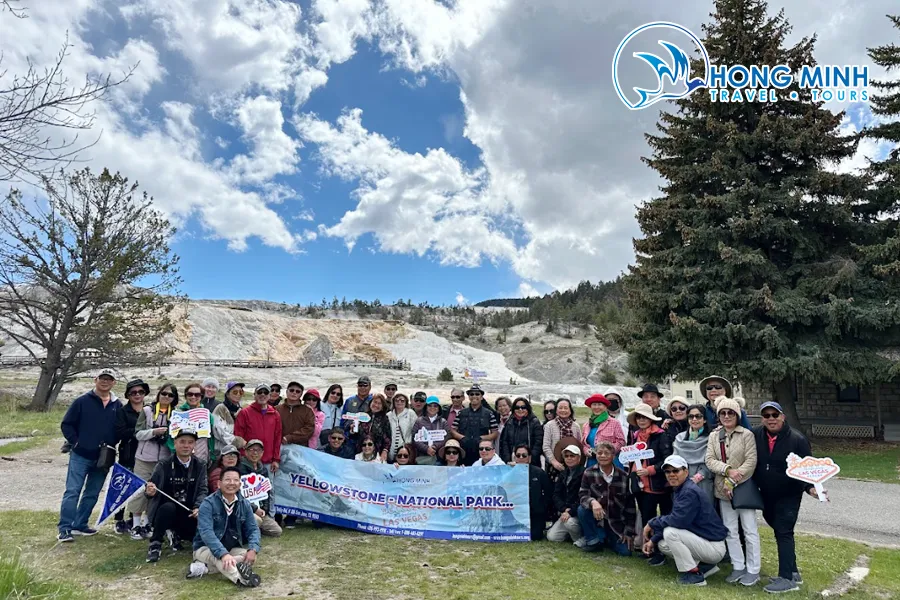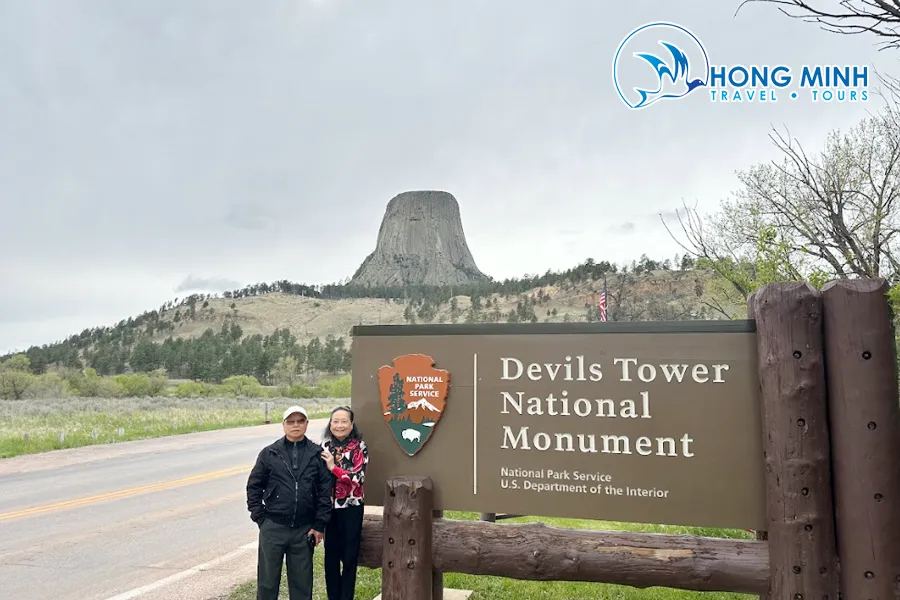Montana, the vast and diverse state of the American West, is renowned not only for its majestic natural beauty but also for its rich historical tapestry. From the footprints of Native American tribes to the steps of pioneering explorers and the enigmatic ghost towns, Montana offers a unique travel journey along historical trails. Join “Du lịch khắp thế gian” (Travel the World) as we uncover unforgettable experiences on these paths steeped in the echoes of time.
Montana, nicknamed “The Treasure State,” holds countless wonders waiting for travelers to discover. Beyond its towering mountains, expansive prairies, and pristine glacial rivers, Montana is a repository of captivating historical narratives. The trails here not only lead through breathtaking landscapes but also take us back in time, exploring the proud and eventful past of this land. Traveling through Montana is more than just a trip; it’s an immersive journey into history and culture.
Yellowstone National Park: Gateway to Montana’s History
Yellowstone National Park, the first national park in the United States and the world, serves as an exceptional starting point for exploring Montana’s history. Established in 1872, Yellowstone is not only famous for its geothermal wonders like Old Faithful geyser and the vividly colored Grand Prismatic Spring but also for preserving traces of Native American presence and early white explorations.
Hiking trails in Yellowstone not only bring visitors closer to the wilderness but also narrate stories of the past. For instance, Uncle Tom’s Trail descends into the Grand Canyon of the Yellowstone, where visitors can marvel at the magnificent waterfalls and learn about the canyon’s exploration in the late 19th century. Another example is the trail around Yellowstone Lake, the largest high-elevation lake in North America, which was a central area for living and hunting for numerous Native American tribes for millennia.

Yellowstone is more than just a national park; it’s a living history museum. Every step on its trails is a new discovery, a new story about the past of Montana and America.
Nez Perce Trail: Footprints of Native Americans
To gain a deeper understanding of Montana’s history, the Nez Perce National Historic Trail is indispensable. This trail, stretching over 1,800 miles across four states, including Montana, marks the poignant journey of the Nez Perce tribe in 1877. Forced to leave their homeland in the Wallowa Valley (Oregon), the Nez Perce people, under the leadership of Chief Joseph, attempted to flee to Canada to avoid being confined to a reservation.
The Nez Perce journey is a tragic tale of resistance and resilience. Along this trail, visitors can find numerous historical sites, battlegrounds, and memorials, providing a clearer picture of the conflict between Native Americans and the U.S. government in the 19th century. In Montana, the Nez Perce Trail traverses stunning wilderness areas, from the Lolo National Forest to the Big Hole National Battlefield, the site of one of the fiercest battles in the Nez Perce War.
Hiking a section of the Nez Perce Trail not only offers physical exercise but also an opportunity to reflect on history, the losses and sacrifices of Native Americans, and the complex relationship between humanity and nature.
Transcontinental Railroad: A Journey that Changed America
Another significant milestone in Montana’s history is the advent of the transcontinental railroad. Completed in 1869, this railway connected the East and West Coasts of the United States, ushering in a new era of commerce, migration, and economic development. Montana, situated along this railway line, underwent profound transformations.
The arrival of the railroad spurred the mining industry in Montana, particularly copper mining in Butte and gold mining in Virginia City. Towns sprang up rapidly along the railway, attracting immigrants from around the world seeking fortune. The railroad also facilitated the transportation of agricultural products and livestock from Montana to major markets in the East.
Today, visitors can experience a part of Montana’s railway history by taking the Amtrak train through the state. Amtrak’s Empire Builder route passes through numerous historical towns and scenic landscapes of Montana, offering a unique perspective on the past and present of this region.
Ghost Towns Montana: Exploring a Glorious Past
Montana is also famous for its ghost towns, settlements that were once bustling but are now abandoned due to economic decline or resource depletion. These ghost towns are historical gems, offering visitors a chance to explore Montana’s golden past.
Virginia City and Nevada City are among the most well-known ghost towns in Montana. Founded in the 1860s during the gold rush, these two towns were once economic and cultural centers of Montana. Today, Virginia City and Nevada City have been preserved and restored, becoming attractive tourist destinations where visitors can stroll along historic streets, tour historical buildings, and learn about the lives of Montana residents in the 19th century.
Bannack State Park, another ghost town in Montana, was once the first capital of the Montana Territory. Bannack was established in 1862 after gold was discovered in the area. The town rapidly grew and became a significant gold mining center. However, after the gold resources dwindled, Bannack was gradually abandoned. Today, Bannack State Park is a historical park where visitors can explore over 60 abandoned buildings and learn about Montana’s gold mining history.

Montana Cuisine: Flavors of the Wild West
A journey to explore Montana’s history would be incomplete without experiencing local cuisine. Montana’s food reflects the cultural and historical diversity of the region, from traditional Native American dishes to those influenced by European and Asian immigrants.
Montana beef is world-renowned for its exceptional quality. Visitors can savor delicious grilled steaks or the region’s signature bison burgers. Salmon and trout are also Montana specialties, often prepared grilled, fried, or smoked.
Additionally, Montana offers many other unique dishes such as bean soup, sourdough bread, and Montana apple pie. Enjoying local cuisine is a fantastic way to further understand Montana’s culture and history.
Tips for Exploring Historical Montana
To have a fulfilling trip exploring historical Montana, visitors should keep in mind a few things:
- Plan Ahead: Montana is a vast state, so planning ahead is crucial. Identify the historical sites you want to visit, learn about the history and culture of each site, and book accommodations and tour tickets in advance if necessary.
- Rent a Car: Renting a car is the best way to explore Montana freely and flexibly. Roads in Montana are wide and easy to navigate, but be sure to drive safely and obey traffic laws.
- Pack Appropriately: The weather in Montana can be unpredictable, especially in the mountains. Pack warm, waterproof clothing and comfortable hiking shoes.
- Learn About Native Culture: Montana has a rich Native American cultural history. Take time to learn about the culture and traditions of Native American tribes in Montana and respect their historical and cultural sites.
- Enjoy Nature: Montana not only has fascinating history but also stunning nature. Take time to explore national parks, national forests, and other wilderness areas of Montana.
Montana is a unique travel destination where history and nature intertwine. The historical trails here not only lead through beautiful landscapes but also take us back in time, exploring captivating stories about the past of the Wild West. Come to Montana and experience an unforgettable travel journey on these historical trails!